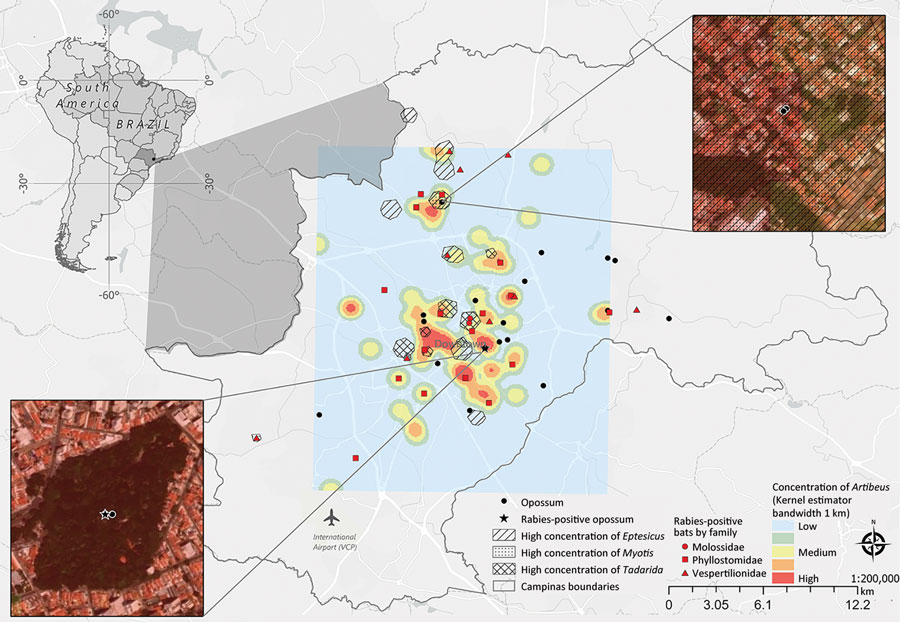Volume 29, Number 12—December 2023
Dispatch
Naturally Acquired Rabies in White-Eared Opossum, Brazil
Figure 2

Figure 2. Kernel density map of concentration of Artibeus spp. bats in study of naturally acquired rabies in a white-eared opossum, Brazil. The kernel concentration layer of Artibeus is overlapped by layers of high concentration of Eptesicus, Myotis, and Tadarida spp. The opossum was found in a vegetated area with a high concentration of Artibeus spp. bats.
1These first authors contributed equally to this article.
2These senior authors contributed equally to this article.
3These authors were co–principal investigators.
Page created: October 31, 2023
Page updated: November 18, 2023
Page reviewed: November 18, 2023
The conclusions, findings, and opinions expressed by authors contributing to this journal do not necessarily reflect the official position of the U.S. Department of Health and Human Services, the Public Health Service, the Centers for Disease Control and Prevention, or the authors' affiliated institutions. Use of trade names is for identification only and does not imply endorsement by any of the groups named above.